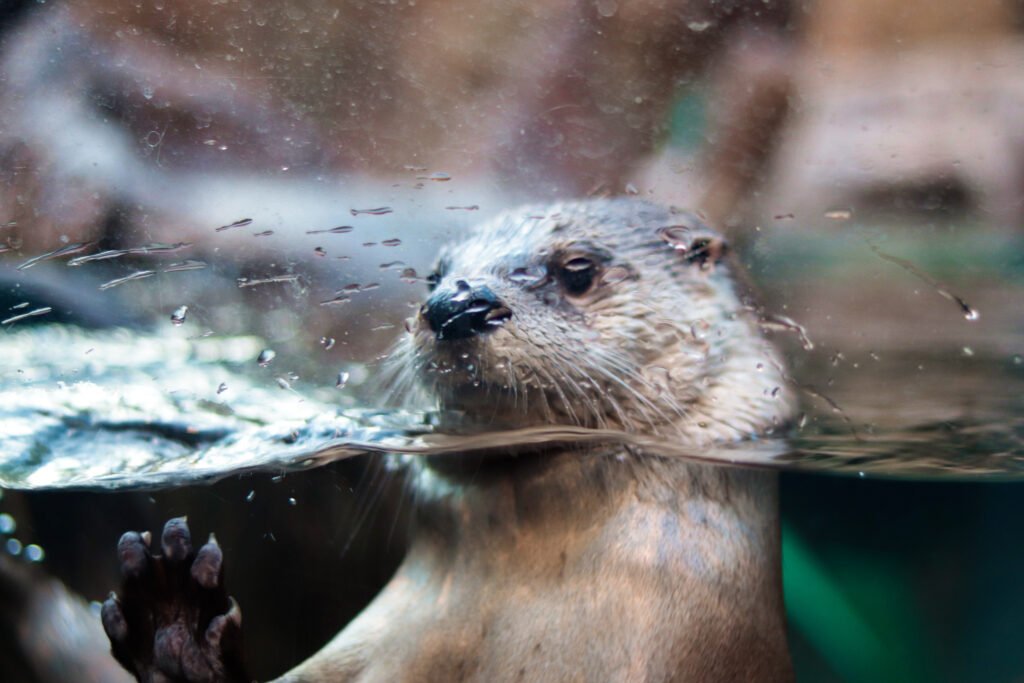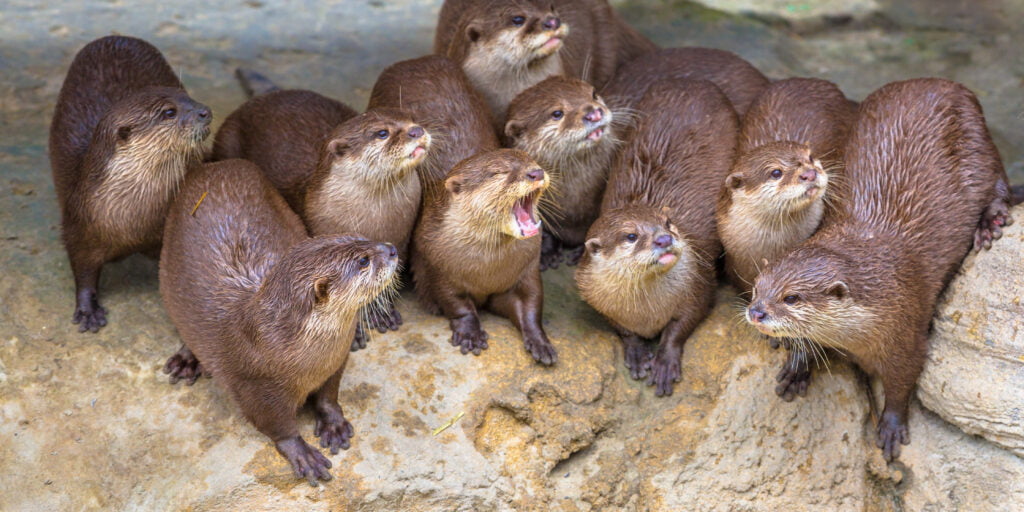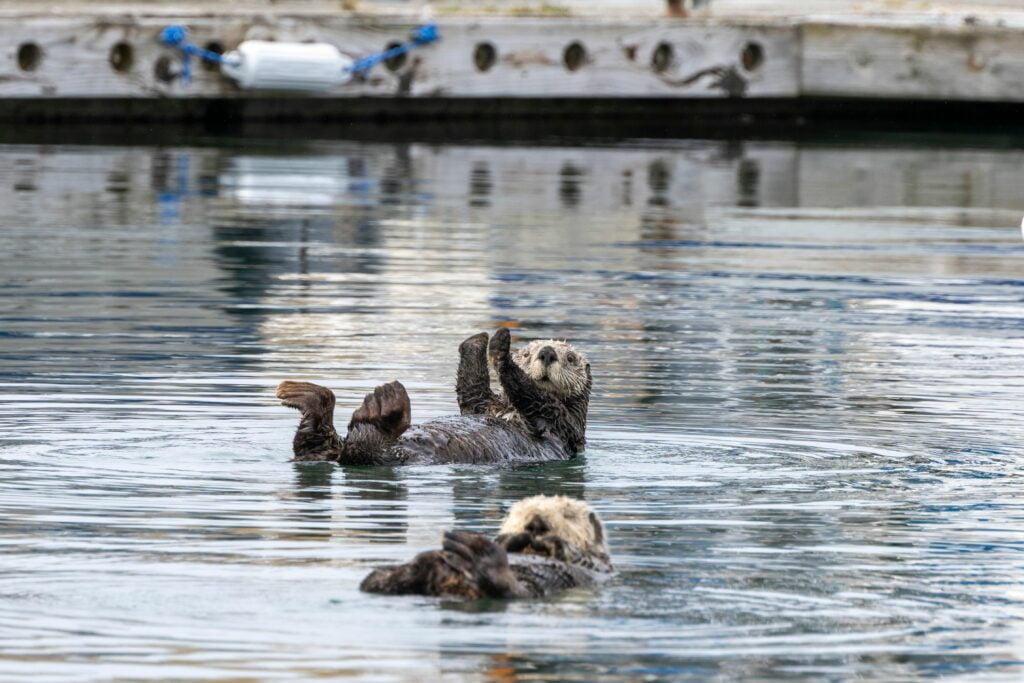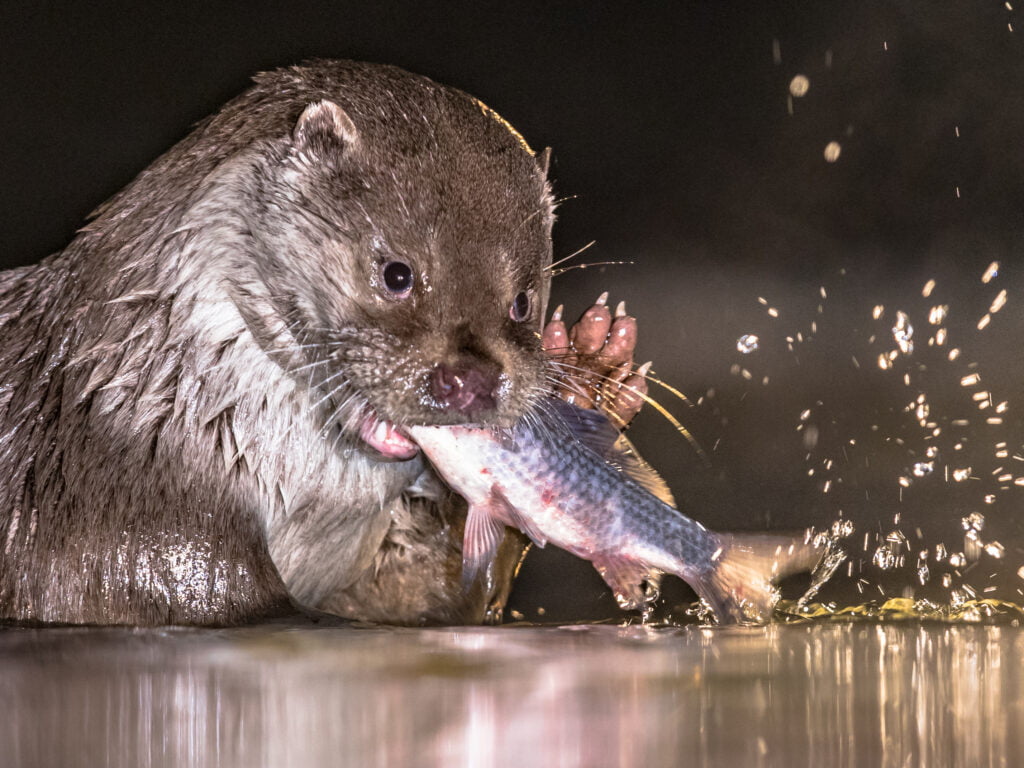15 Interesting Facts About Otters

Introduction
Introductions play a crucial role in framing the content of an essay, providing essential context, and engaging the reader’s interest. A well-crafted introduction should identify the topic, offer necessary background information, and indicate the particular focus of the essay
In this article, we will delve into the fascinating world of otters, exploring their unique characteristics and behaviors. By the end of this article, you will have gained a deeper understanding and appreciation for these captivating aquatic mammals.
Interesting Facts About River Otters

1. Aquatic Acrobats
Otters are known for their remarkable agility in water. They can swim at speeds up to 9 km/h and dive as deep as 60 feet. Their streamlined bodies and webbed feet make them excellent swimmers and hunters in aquatic environments.
2. Fur Density
Otters have the densest fur of any mammal. Their fur consists of a dense undercoat that is covered by longer guard hairs. This double layer of fur helps to insulate them against the cold and traps a layer of air to keep them buoyant in water.
3. Playful Creatures
Otters are known for their playful behavior. They often engage in various activities such as sliding down muddy or snowy banks, juggling small stones, and chasing each other in water or on land.
4. Tool Use

Some otter species, like the sea otter, are known to use tools. They often use rocks to crack open hard-shelled prey like clams and sea urchins.
5. Social Animals

Otters are social animals and often live in groups called “rafts” or “romps.” These groups can consist of a few individuals to more than a hundred, depending on the species and environmental conditions.
6. Vocal Communication
Otters are quite vocal and use a variety of sounds to communicate with each other. These sounds can include chirps, grunts, whistles, and even screams.
7. Keystone Species
Sea otters are considered a keystone species in their ecosystem. Their diet of sea urchins helps maintain the balance of kelp forests, which provide habitat for numerous other marine species.
8. Holding Hands

Sea otters are known to hold hands while they sleep to prevent drifting apart. This adorable behavior is called “rafting”.
9. Unique Pockets
Sea otters have loose skin under their forearms that forms pockets. They use these pockets to store food and tools, such as rocks, while they are diving.
10. Motherly Care
Otter mothers are extremely attentive to their young, called pups. They carry their pups on their chests, groom them, and teach them how to swim and hunt.
11. Delayed Implantation
Some otter species, like the North American river otter, experience delayed implantation. This means that after mating, the fertilized egg does not immediately implant in the uterus, allowing the mother to time the birth of her pups according to environmental conditions[5].
12. Sensitive Whiskers
Otters have highly sensitive whiskers called “vibrissae” that help them detect the movements of prey in the water.
13. Different Diets

While most otter species primarily eat fish, their diets can vary depending on the species and habitat. Some otters also consume crustaceans, mollusks, amphibians, birds, and small mammals.
14. Threats to Otters
Otters face numerous threats, including habitat loss, pollution, and hunting for their fur. Some species, like the sea otter and giant otter, are listed as endangered due to these factors.
15. Lifespan
On average, otters live up to 10-15 years in the wild. However, in captivity, they can live up to 20 years due to a controlled diet and the absence of predators.
Conclusion
Throughout this article, we have explored various aspects of otters, shedding light on their unique traits and behaviors. These fascinating creatures continue to captivate wildlife enthusiasts and researchers alike. As we conclude, it is essential to remember the importance of preserving their habitats and protecting them from threats such as pollution and hunting. By doing so, we can ensure that future generations can also marvel at the wonders of these remarkable animals
FAQ
Q: What are some interesting facts about otters?
A: Some interesting facts about otters include their dense fur, their ability to hold their breath underwater, and their playful nature.
Q: Why do otters have the densest fur?
A: Otters have the densest fur of any mammal, with up to a million hairs per square inch. This helps to keep them warm in cold water.
Q: Do otters spend a lot of time in the water?
A: Yes, otters spend most of their time in the water. They are excellent swimmers and can hold their breath for several minutes.
Q: What are some species of otters?
A: Some species of otters include the sea otter, river otter, giant otter, and small-clawed otter.
Q: Are otters social animals?
A: Yes, otters are social animals and often live in groups called rafts.
Q: Can female sea otters give birth in the water?
A: Yes, female sea otters give birth in the water. They usually have one pup at a time and take great care of their babies.
Q: Do otters help maintain the ecosystem?
A: Yes, otters play an important role in maintaining the ecosystem. They help control populations of shellfish and other aquatic animals.
Q: What do otters eat?
A: Otters are carnivorous and mainly eat fish, shellfish, and other aquatic creatures.
Q: How much can otters eat in relation to their body weight?
A: Otters can eat up to a quarter of their body weight in food each day.
Q: How long can otters hold their breath underwater?
A: Otters can hold their breath underwater for up to eight minutes.





